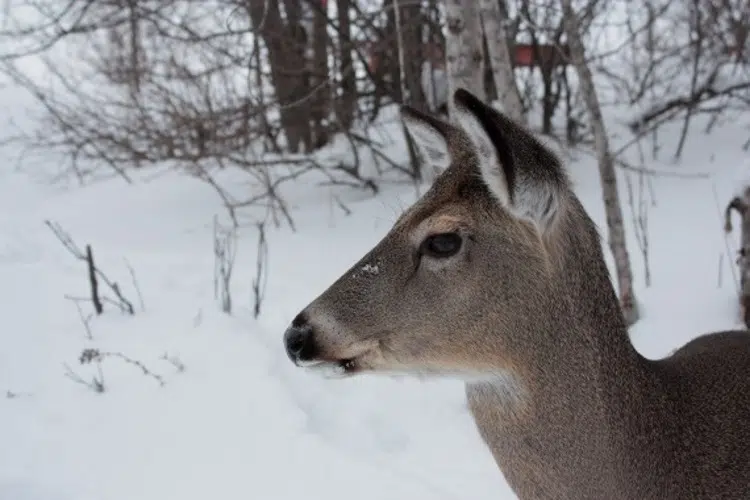
A mix of good and bad can best sum up the situation animals in the region are facing with the low snowfall.
For some animals, like white tailed deer, it could lead to a population boom, according to Ministry of Natural Resources and Forestry spokesperson Michelle Nowak.
“Winters of lower snow depth result in fewer deer succumbing to winter caused mortality, that is depletion of their body fat reserves. It often supports higher fawn production the following spring.”
On the flip side, predators like wolves will also benefit and will be able to take down prey easier due to low snow depth….additionally wolves might not be as prevalent on roadways and trails, and will stick to the deeper bush where they will more likely be able to locate food.
The lack of snow cover also makes it easier for many herbivore species to access foliage just under the snow.
But while there are benefits, Nowak notes moose could also be in for a rough spring and summer.
“Moose can come through winters of lower snow depth in better body condition than winters with significant amounts of snow. However, in years of lower snow depth and an earlier snow melt, increased moose winter tick abundance may result.”
This could lead to poorer body conditions for moose going forward into 2024.
Smaller animals are possibly in for more negative than positive impacts unfortunately, such as grouse and partridge, who benefit from deeper snow in the winter.
Nowak says those animals tend to use the snow to burrow during the usually frigid months.
“Being unable to burrow in deep enough snow, lessens the ability of grouse to moderate the winter temperatures they experience and maintain their body condition. For example it will require more calories for them to maintain their body temperature.”
As a result according to Nowak, that could increase the chances of an unfortunate encounter with a predator, who will be able to pick off grouse much easier.
Weather across the region has been much different than normal this winter with many changes impacting even humans with ice road closures, flooding threats, cancelled, postponed or relocated snowmobile rallies and closed snowmobile trails.
However, according to the MNRF scenarios like this aren’t really out of the ordinary, as El Niño patterns like the one being experienced now, historically occur every two to seven years.



